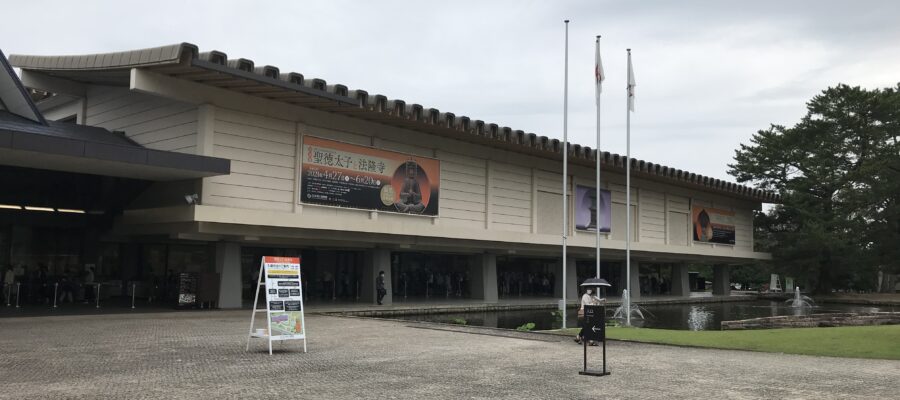特別展「聖徳太子と法隆寺」
奈良公園にある奈良国立博物館。東大寺や春日大社にはよく行くのですが、博物館に行くことはめったにありません。今回、特別展の「聖徳太子と法隆寺」に法隆寺聖霊院の国宝、聖徳太子像が出展されると聞き、訪問してきました。
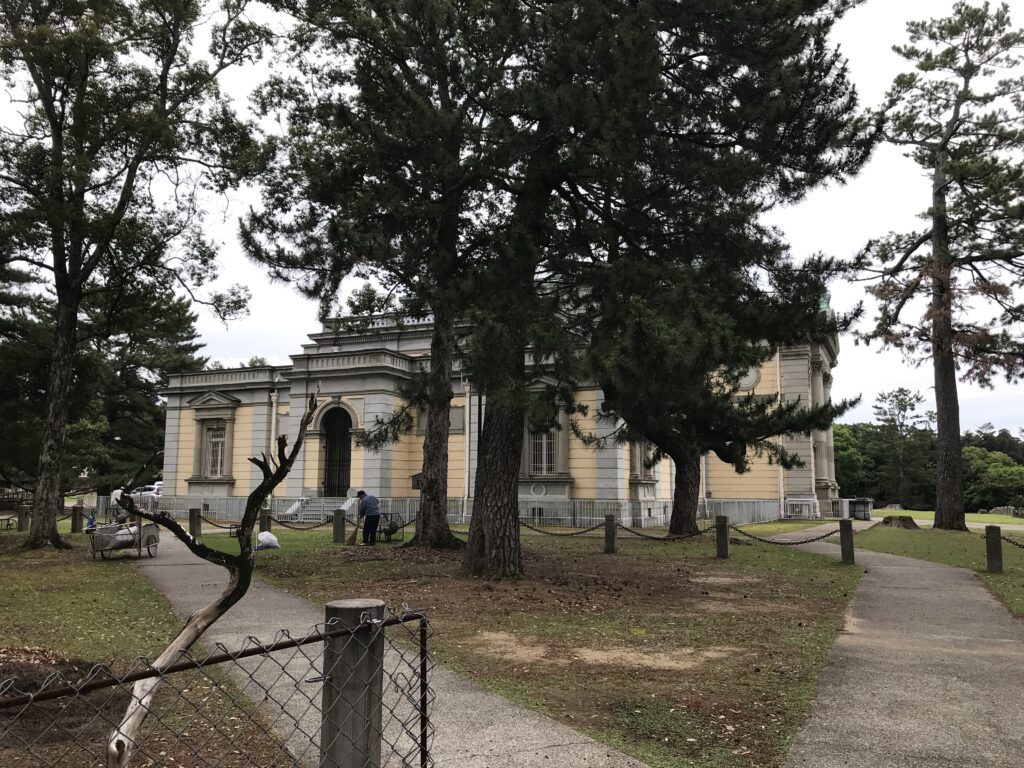
金峯山寺の仁王像
近鉄奈良駅から歩いていくと、特別展の予約入館時間まで余裕がありましたので、先に、なら仏像館で仏像を見てきました。見ごたえのある仏像が多い中、現在、金峯山寺の仁王門が修理中の為、金剛力士像2体が奈良国立博物館に出張展示されています。
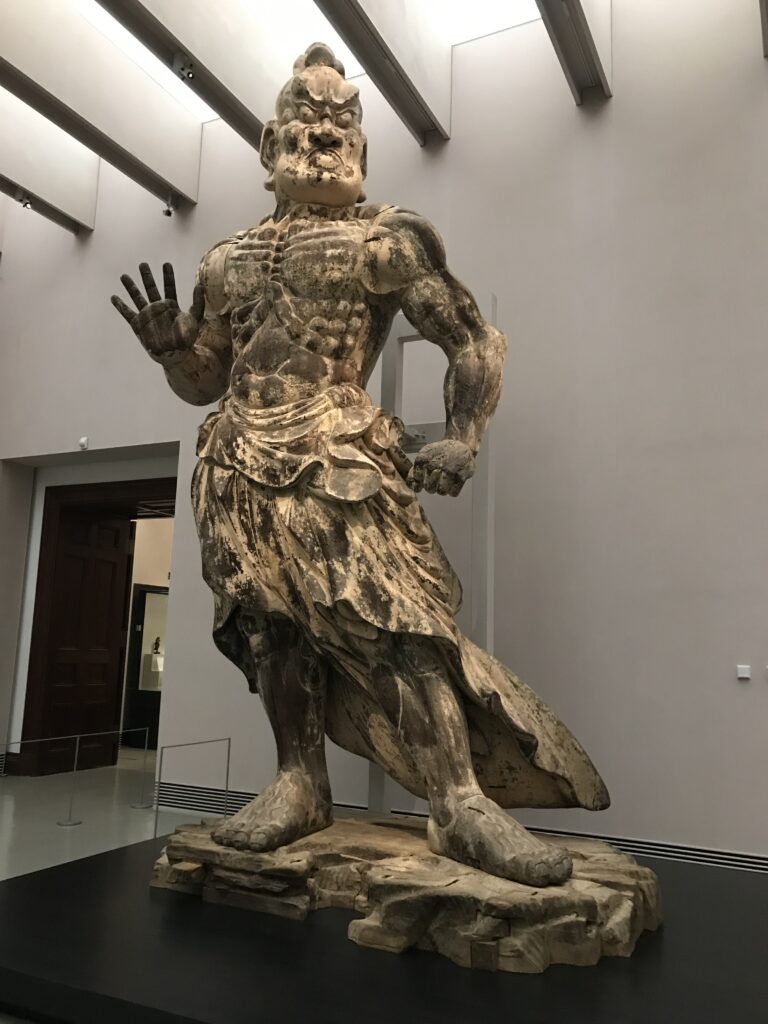
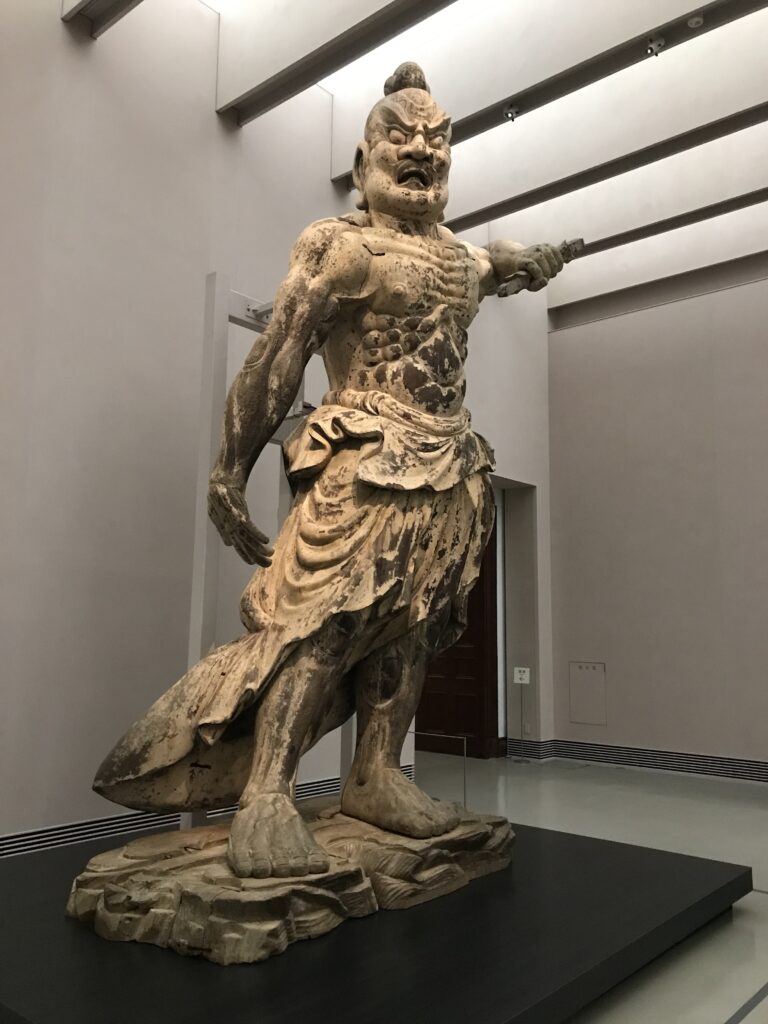
東大寺の金剛力士像に次いで、日本で2番目に大きい木製の金剛力士像です。写真にあるように、大きさも、像の迫力も鬼気迫るものがあります。ただ、2番であるため、知名度が低いように感じます。もったいない限りです。東大寺の仁王像の場合、金網越しなので、像の足の写真を撮ると、ピントが金網に合ってしまうのですが、今回の展示では遮るものが何もないため、像の足の細かい彫刻まで間近で見ることができました。
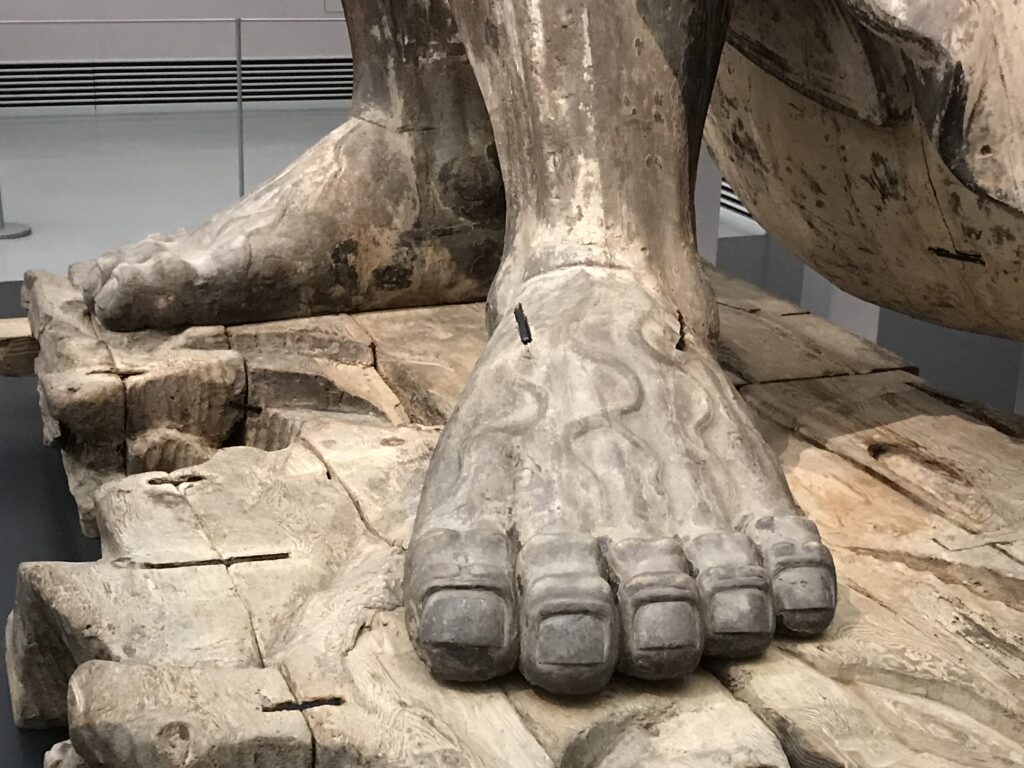
いよいよ入館
いよいよ、特別展に向かいます。写真撮影は禁止なので館内での写真はありません。コロナ対策で時間枠を区切って、入場時間が予約制になっています。西新館の前には、同じ時間枠の見学者が既に沢山並んでいました。
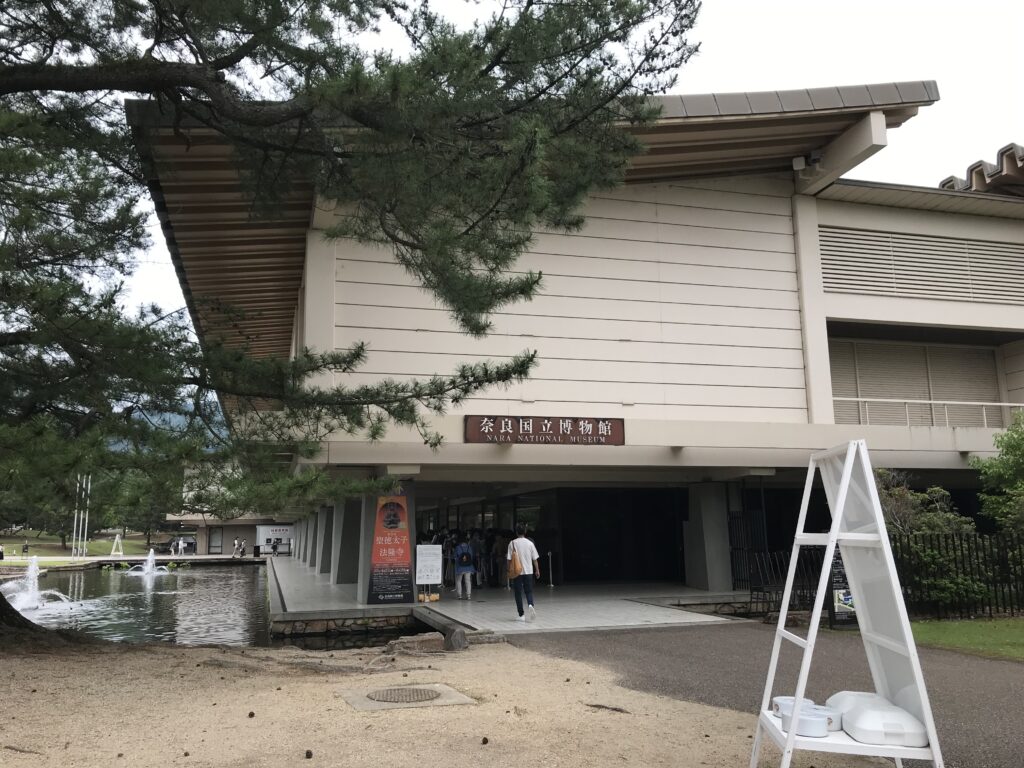
聖徳太子像と玉虫厨子
館内に入って、いろいろと見ていくと、聖徳太子像に出会うことができました。法隆寺では年1回の拝観で、像を少し離れて正面からしか拝見できませんが、ここでは、360度、上からでも、下からでも見ることができます。間近で見るので、像が身に付けている細かな装飾品も良く見えます。今夏は、東京でも同じ特別展が開かれるので、東京の方にも是非見ていただきたいと思います。
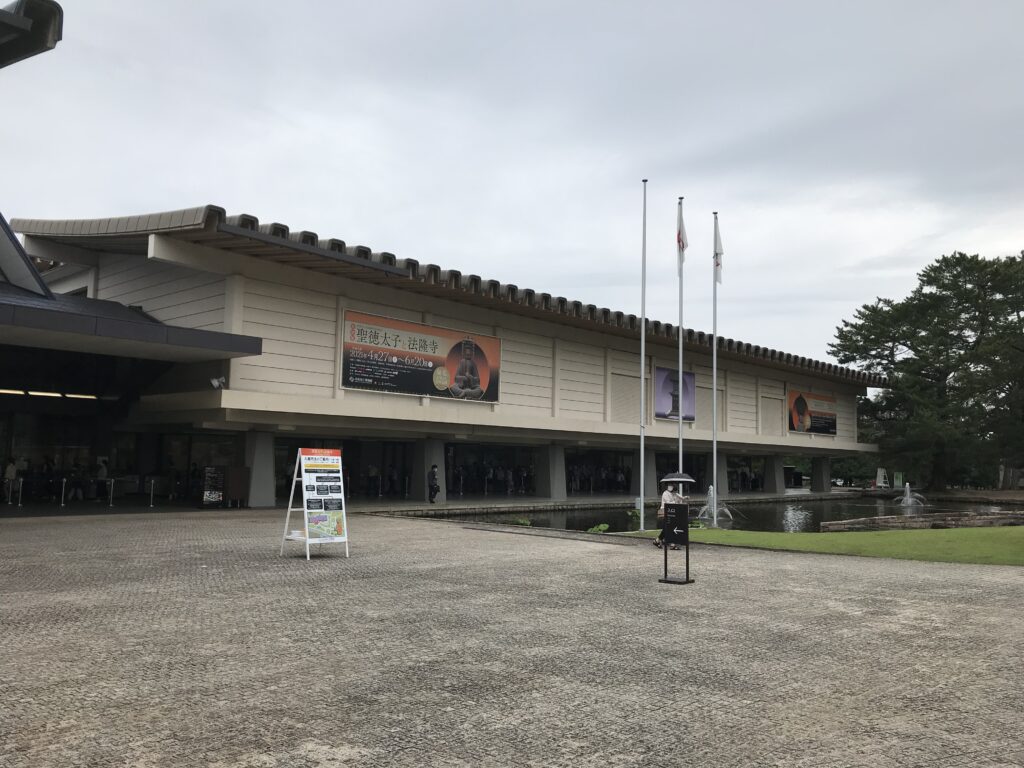
1つ、自分にとって勉強になったことがありました。玉虫厨子の玉虫の羽が、どこに付いているかやっと判別しました。いつも、法隆寺で見ている時は、一体どこについているのか、わからなかったのですが、博物館の展示では照明も若干明るく、図で解説もされているので、なんとか見つけることができました。“なんとか”なので、視力が下がっている方には、やはり見つけるのは難しいかもしれません。(完)
法隆寺が紹介されている書籍
法隆寺の建築について詳しく絵解きされています。
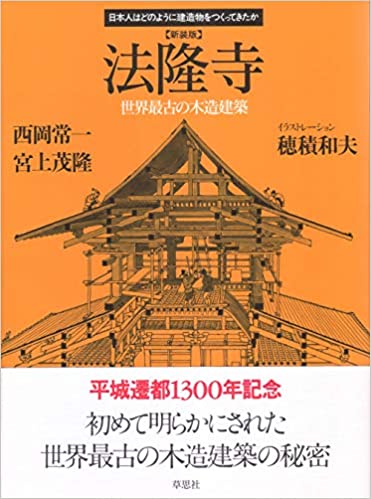
新装版 法隆寺 世界最古の木造建築 (日本人はどのように建造物をつくってきたか) [ 西岡 常一 ]
価格:1,760円
(2021/6/4 12:49時点)
感想(4件)
Nara National Museum (English)
Special Exhibition “Prince Shotoku and Horyuji Temple”
The Nara National Museum is located in Nara Park. I often visit Todaiji Temple and Kasuga Taisha Shrine, but I rarely visit museums. This time, I visited the museum because I heard that the statue of Prince Shotoku, a national treasure of Horyuji Seiryoin, would be exhibited in the special exhibition “Prince Shotoku and Horyuji Temple.”
Niou Statues at Kinpusenji Temple
Walking from Kintetsu Nara Station, I had enough time to visit the Nara Buddhist Sculpture Hall to see the Buddhist statues before the special exhibition. Among the many impressive Buddhist statues, two statues of Kongorikishi (guardian deity of Buddhism) were on display at the Nara National Museum because the Niomon gate of Kinpusenji Temple was currently under repair.
These are the second largest wooden statues of Kongorikishi in Japan, after those at Todaiji Temple. As you can see in the photo, both the size and the power of the statue are uncanny. However, because it is the second largest statue, I feel that it is not well known. It’s a shame. In the case of the statues of Niou at Todaiji, if you take a picture of the feet of the statue, the focus would be on the wire mesh, but in this exhibition, there was nothing to block the view, so you could see the detailed carvings on the feet of the statue up close.
Finally, I entered the museum.
Finally, I headed to the special exhibition. No photos inside the museum as photography is not allowed. The entrance time is by reservation only, with time slots separated to prevent covid-19. In front of the West Wing, there were already many visitors lined up for the same time slot.
Statue of Prince Shotoku and Tamamushi Shrine
After entering the museum and looking around, I came across the statue of Prince Shotoku. At Horyuji Temple, I
can only see the statue once a year from the front, but here, I can see it 360 degrees, from above or below. Since I was up close, I could see the detailed ornaments worn by the statues better. This summer, the same special exhibition will be held in Tokyo, so I hope that people in Tokyo will be able to see it as well.
There was one thing that I learned for myself. I was finally able to identify where the wings of the tamamushi in the shrine were attached. Whenever I saw them at Horyuji Temple, I couldn’t figure out where they were attached, but in the museum exhibit, the lighting was a little brighter and there were diagrams to explain them, so I managed to find them. If your eyesight is deteriorating, it may still be difficult to find.
Musée national de Nara (Français)
Exposition spéciale ” Le prince Shotoku et le temple Horyuji “.
Le musée national de Nara est situé dans le parc de Nara. Je visite souvent le temple Todaiji et le sanctuaire Kasuga Taisha, mais je visite rarement les musées. Cette fois, j’ai visité le musée parce que j’ai entendu dire que la statue du prince Shotoku, un trésor national de Horyuji Seiryoin, serait exposée dans le cadre de l’exposition spéciale “Le prince Shotoku et le temple Horyuji”.
Statues de Niou au temple Kinpusenji
En partant de la gare Kintetsu de Nara, j’ai eu le temps de visiter le hall des sculptures bouddhistes de Nara pour voir les statues bouddhistes avant l’exposition spéciale. Parmi les nombreuses statues bouddhistes impressionnantes, deux statues de Kongorikishi (divinité tutélaire du bouddhisme) étaient exposées au Musée national de Nara car la porte Niomon du temple Kinpusenji était en cours de réparation.
Ce sont les deuxièmes plus grandes statues en bois de Kongorikishi au Japon, après celles du temple Todaiji. Comme vous pouvez le voir sur la photo, la taille et la puissance de la statue sont troublantes. Cependant, comme il s’agit de la deuxième plus grande statue, j’ai l’impression qu’elle n’est pas très connue. C’est dommage. Dans le cas des statues de Niou à Todaiji, si vous prenez une photo des pieds de la statue, l’accent est mis sur le grillage, mais dans cette exposition, rien ne bloque la vue, de sorte que vous pouvez voir de près les sculptures détaillées sur les pieds de la statue.
Finalement, je suis entré dans le musée.
Enfin, je me suis dirigé vers l’exposition spéciale. Pas de photos à l’intérieur du musée car la photographie n’est pas autorisée. L’entrée se fait uniquement sur réservation, avec des créneaux horaires séparés pour éviter le covid-19. Devant l’Aile Ouest, il y avait déjà beaucoup de visiteurs faisant la queue pour le même créneau horaire.
Statue du prince Shotoku et sanctuaire de Tamamushi
Après être entré dans le musée et avoir regardé autour de moi, je suis tombé sur la statue du prince Shotoku. Au temple Horyuji, je
ne peux voir la statue qu’une fois par an de face, mais ici, je peux la voir à 360 degrés, de dessus ou de dessous. Comme j’étais de près, je pouvais mieux voir les ornements détaillés portés par les statues. Cet été, la même exposition spéciale sera organisée à Tokyo. J’espère donc que les habitants de Tokyo pourront eux aussi la voir.
Il y a une chose que j’ai apprise par moi-même. J’ai enfin pu identifier où étaient fixées les ailes des tamamushi du sanctuaire. Chaque fois que je les voyais au temple Horyuji, je n’arrivais pas à comprendre où elles étaient fixées, mais dans l’exposition du musée, l’éclairage était un peu plus vif et il y avait des diagrammes pour les expliquer, alors j’ai réussi à les trouver. Si votre vue se détériore, il se peut que vous ayez encore du mal à les trouver.
